No products in the cart.
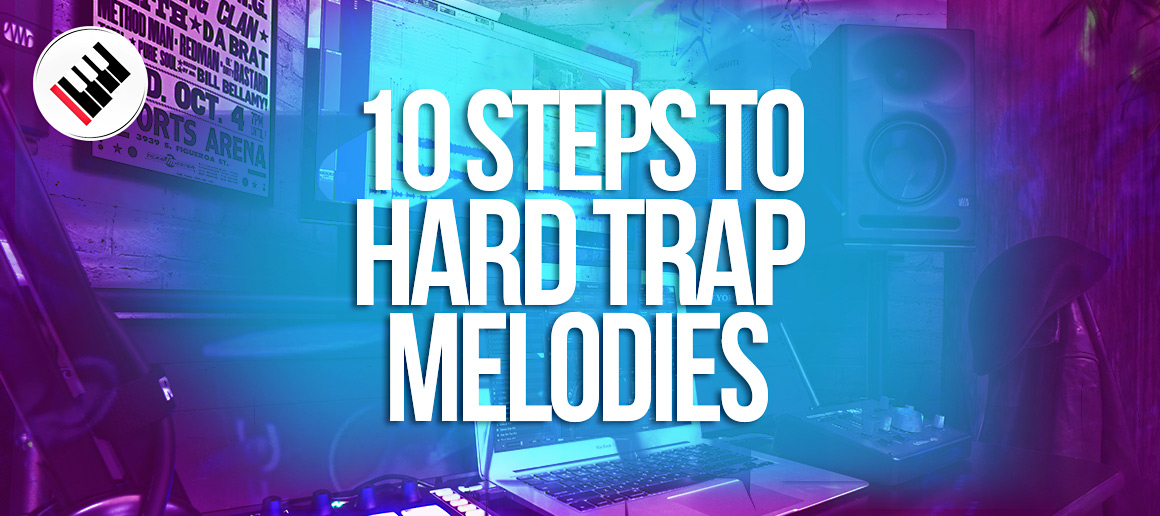
Everyone wants to make hard Trap Beats. If you want to learn how to make them, here’s a short article showing you how to make hard Trap melodies in just 10 steps! These tips and secrets can help you create the hardest Trap Beats. Get your beats to artists you really want to work with or even placements!
Complementing our written guide, Producer rly Beats made a quick video tutorial showing you some tricks and secrets you need to know when making hard Trap Beats.
Disclaimer: When clicked, this video loads from YouTube servers. See our privacy policy for details.
If you want to go into more detail, we also published an extensive article about how to make melodies like industry producers.
In this guide, we break down the beat making process into 10 essential steps for you!
Step 1: Choose a tempo/BPM
Choose between the average tempo range for Trap Beats at around 120 – 150 BPM.
Step 2: Choose a scale
It’s always a good idea to use the D# minor scale in order to get a darker trap sound. This scale has a dark and moody feel that simply works well for trap music. When creating your melody, focus on the first, sixth, and fourth notes of the scale, as these notes already have a dark sound.
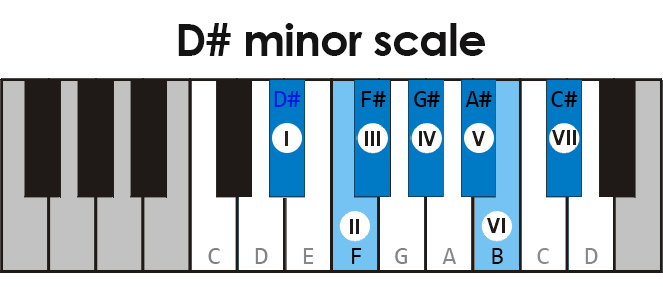
Step 3: Start with bass notes
The first step in creating a trap melody is to start with some bass notes. These notes will form the foundation of your melody and provide the low-end energy that is characteristic of trap music. For example, use the I, IV and VI (D#, G#, B) note as explained above to get a dark and hard sound.
Step 4: Turn your bass notes into chords
Once you have your bass notes, you can turn them into chords. To do this, simply use the complementing minor and major chords.
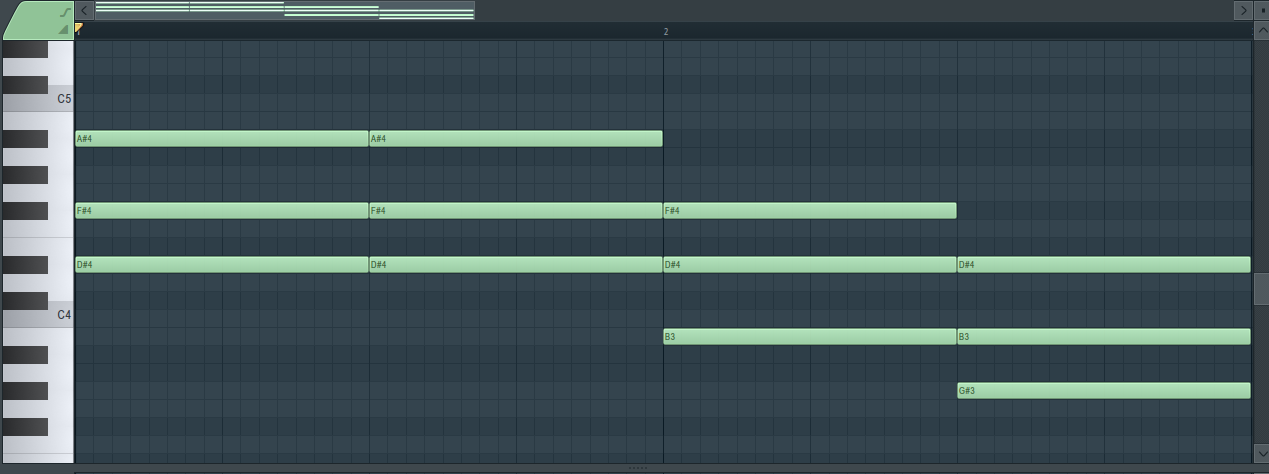
You can follow the chord codes scheme to create them (e.g. 0-3-7; meaning the root note, skip two notes and then skip three notes).

Step 5: Make chords interesting
However, to make things more interesting make sure to use suspended second chords (0-2-7) and suspended fourth (0-5-7) chords. These chords add tension and dissonance to your melody, which can help to create a darker and more aggressive sound. Chord inversions are also a great way to add variety to your chord progressions while still keeping one note in common throughout. This will help to create a cohesive and consistent sound in your melody.
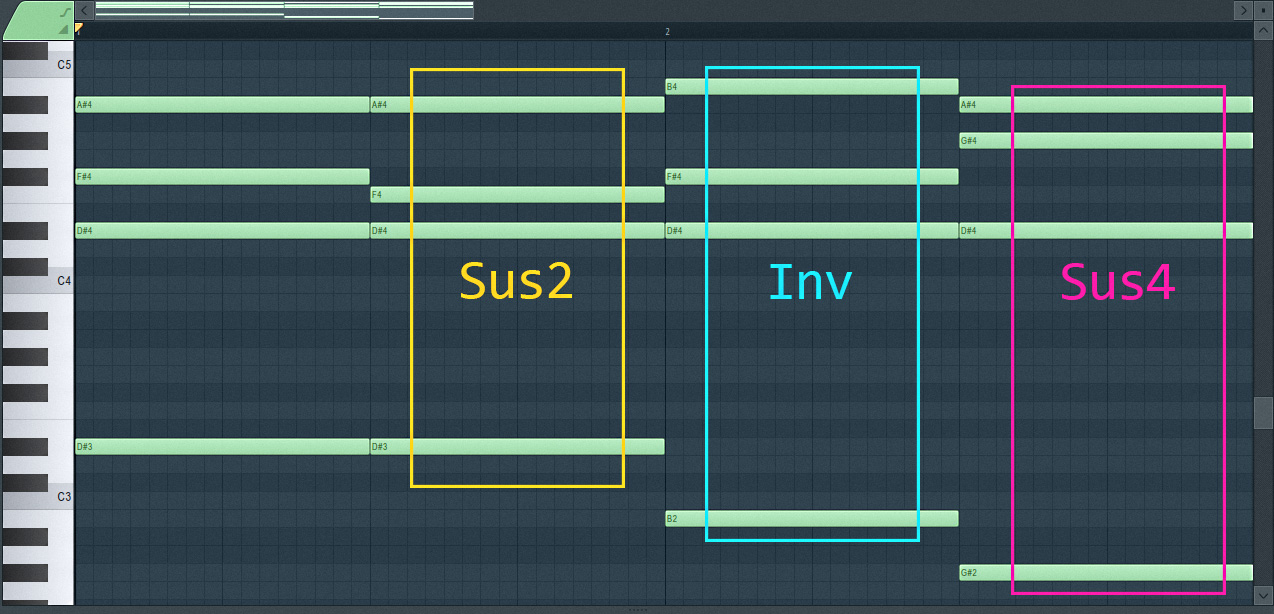
Step 6: Add a simple and repetitive top line
Next, add a simple and repetitive top line to your melody. Make sure that the rhythm of your top line repeats, as this will help to create a catchy and memorable hook.
Step 7: Alter some of the chords and change up some of the notes
To add interest to your melody, arpeggiate your chords and even alter some of the chords in your progression by changing up some of the notes within your scale. This can help to create variation and keep your listeners engaged throughout the track.
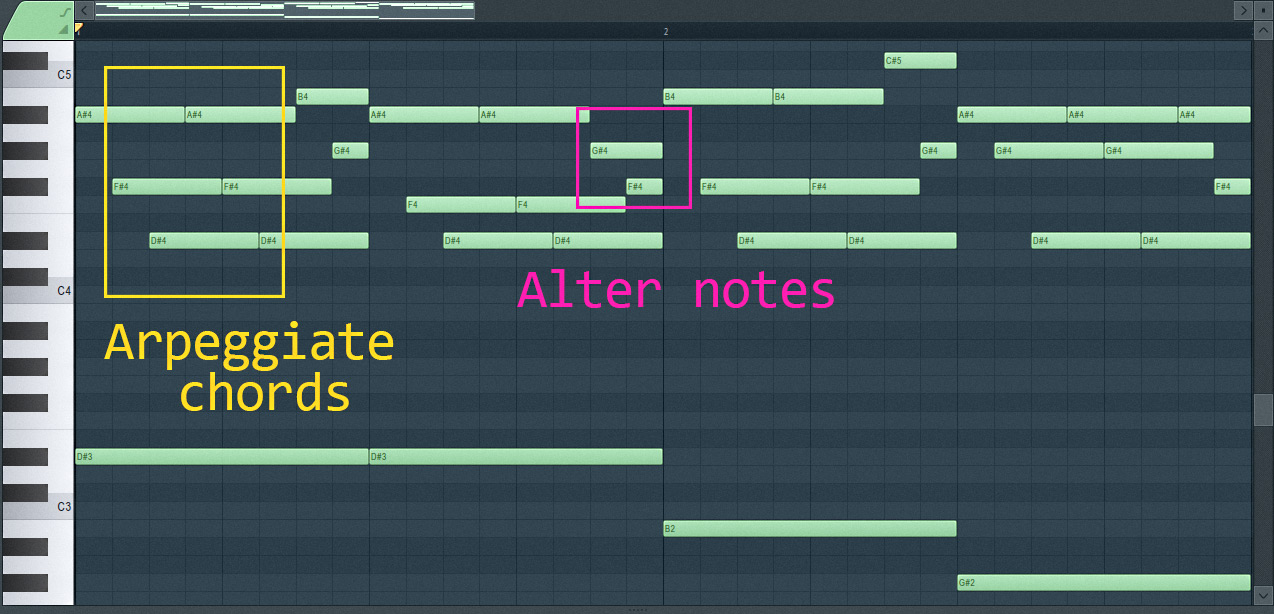
Step 8: Layer your bass notes
Layering your bass notes with e.g. strings can add depth and richness to your melody. Additionally, adding sounds like bells, plucks or percussions can help to accentuate certain notes and provide rhythmic interest.
Step 9: Layer your chords
Layering your chords with a pad can add texture and atmosphere to your melody and overall sound. This will help to create a fuller and more immersive sound.
Step 10: Create drums
Finally, create simple but rhythmic trap drums to accompany your melody. Make sure that your drums hit hard and provide the driving energy that is characteristic for all Trap Beats.
And there you have it, you’ve made it till the end! By following these simple 10 steps, you can create hard hitting trap melodies that will make your speakers hit hard.
If you found this article about how to make hard Trap melodies helpful, share it with your friends. If you have any comments or want to show us your beats you’ve created, leave a comment below. For more articles like this, make sure to check our Blog posts and follow us on social media. Happy producing!



